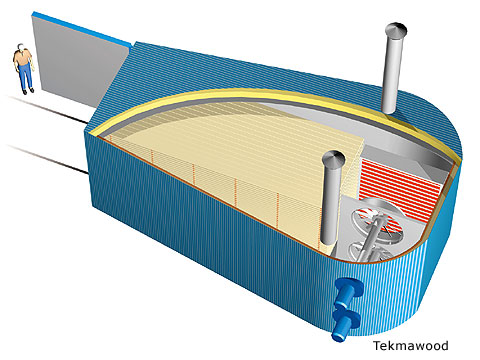The drying process in a hot kiln is done at temperatures above 100°C, sometimes it can go as high as 120-130°C. There is no air ventilation in the hot kiln; the heat is generated by the steam from boiling water. The steam then escapes the kiln from an outlet flap with some help from small excess pressure inside the kiln. The drying process is fast, from 12 hours to about 48 hours. Handling the kiln is simple because the only thing that is monitored is the air temperature inside the kiln.
In theory the hot drying reduces the risk of cracks in the wood. It also evens the internal stresses in the growth, which means that there is less risk of shape shifting. The elasticity of the wood increases as the temperature rises. This also reduces the risks of cracking.
A heating process has also been used nowadays where the sawed wooded is dried until its almost free of water. The process is continued by raising the temperature from 190°C to 220°C. This process is called quick drying.

Hot air drying
During this process the temperature is raised to 115 -120 °C in the beginning. The drying speed is increased by ventilation. The drying is done in a mixture of air and steam. The moisture levels are monitored.
Relative humidity of air and the wood equilibrium moisture is obtained by using lower temperatures than what’s used in hot drying. This makes hot air drying a faster drying method compared to hot drying.
Nowadays the hot drying and hot air drying processes aren’t used much due to the higher energy costs.
Hot- and hot air drying properties
- Very short drying times
- Low energy consumption
- Only small defects in the wood when dried properly.
- Quite strong color differences, especially when drying with fresh wood.
- Conifers have a strong resin leakage.
- Strength and workability is slightly weaker
- Thicker pieces tend to get cracks on the inside, just as some special woods do.